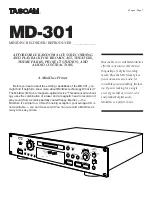
3-26
IM DR231-01E
3.8
Countering Noise
Types and Features of Noise Sources
Commercial Power Supply
It is necessary to consider both 50 and 60Hz as noise components. It is important to note that a
power supply line in which a thyristor or inverter is incorporated functions not only as an “energy
surplus line”, but also as a “supply surplus line”.
Thyristor (SCR)
A thyristor is used to control power through ON/OFF modulation of commercial power by
controlling the phase angle.
50Hz
or
60Hz
*heaters, etc.
noise
phase angle
Current
Voltage
Thyristor waveform
Thyristor
Unit
*Load
When the thyristor turns ON or OFF, a pulse noise is superimposed on commercial power supply,
and its pulse width is approximately 1
µ
s. Accordingly, thyristor noise can be defined as follows.
• thyristor noise = commercial power pulse noise
Inverter
Commercial power supply is converted to direct current by a rectifier (sometimes the thyristor is
used as the rectifier to stabilize direct current) and then modulated by a switching transistor and
finally converted into alternating current at the desired frequency (from tens to hundreds of Hz) to
drive a motor, for example. If the load to be driven is a fluorescent lamp, the frequency is tens of
kHz. Accordingly, inverter noise can be defined as follows.
Inverter noise = commercial power pulse noise (high density) + variable low
frequency noise
Since the density of pulse noise is high compared to that of a thyristor and in addition, there is
variable frequency noise, it is difficult to consider a countermeasure for inverter noise.
Commercial
power supply
Rectifier output
DC output
Inverter output
Commercial
power supply
Rectifier
DC filter
Inverter
Motor
Principle of inverter
Summary of Contents for DR130
Page 12: ...10 IM DR231 01E ...
















































